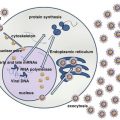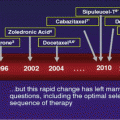© Springer International Publishing Switzerland 2015
Jean-Pierre Droz, Bernard Carme, Pierre Couppié, Mathieu Nacher and Catherine Thiéblemont (eds.)Tropical Hemato-Oncology10.1007/978-3-319-18257-5_18Epidemiology and Mechanism of Carcinogenesis of Schistosomiasis
(1)
Section for Parasitology and Aquatic Diseases, Faculty of Health and Medical Sciences, University of Copenhagen, Dyrlægevej 100, 2. floor, Frederiksberg C, DK-1870 Copenhagen, Denmark
Keywords
Urogenital schistosomiasis Schistosoma haematobium Bladder cancerInflammation-related carcinogenesisSquamous cell carcinomaHelminthSchistosomiasis is a water-related vector-borne disease caused by blood-dwelling trematodes (blood flukes) of various species. The infection is widespread with 85 % of the infections occurring in sub-Saharan Africa. It is estimated that 230 million people are actively infected and a similar number are suffering from postinfection morbidity [7]. It is a poverty-related disease, and it is highly prevalent in areas where adequate facilities with respect to water and sanitation are scarce [1]. Of the several species of human schistosomes, only Schistosoma haematobium, which causes urogenital schistosomiasis, has been classified as a carcinogen, and urogenital schistosomasis is associated with squamous cell carcinoma (SCC) of the urinary bladder [5, 13].
1 Epidemiology of Schistosomiasis
People get infected by contact with infested freshwater bodies such as natural rivers, streams, lakes and ponds as well as man-made irrigation schemes and dams where infected intermediate host snails are living and the infective stage of the parasite, the cercaria, will penetrate the skin of people when in contact with the water [1]. Water contact activities differ with respect to age and gender and will typically be related to domestic activities, recreational activities such as playing in water, and occupational activities where contact with water is inevitable. Often the occupation of the local population, such as fishing and farming, makes them particularly vulnerable to contracting infections. In such areas, the infection levels are often very high and transmission of the infection is intense. The infection is a result of often many years of exposure to the infested water, and children start getting infected as soon as they are old enough to have water contact. Adult worm pairs accumulate with time, and it has been estimated that worms have a lifespan of approximately 3–5 years. The infection levels typically peak around puberty where after infection levels drop to a low level in adults. Immunity develops slowly and is indicated by the fact that adults get reinfected to a much lesser extent than children despite contact with infested water. Furthermore, resistance to reinfection is correlated with specific immune responses against parasite antigens [8].
S. haematobium worms are located in the urogenital venous plexus especially the veins surrounding the urinary bladder, and parasite eggs accumulate in the bladder where they give rise to an intense inflammatory response in the mucosa. Children harbour active infections characterised by excretion of parasite eggs in urine, very frequently accompanied by haematuria, dysuria and inflammation-related urinary tract pathology such as bladder polyps, bladder wall thickening and sometimes hydronephrosis caused by intense local granulomatous inflammation caused by eggs deposited around the ureter ostia [8]. The infections observed in adults are most often chronic in nature, and parasite egg excretion may be low or absent. However, since schistosomiasis-associated cancer of the urinary bladder is found in adults, the occurrence of a cancer is not necessarily associated with detectable parasite eggs in the urine. The bladder cancer is a result of many years of exposure to infection and a steady accumulation of parasite eggs in the urinary tract tissue, resulting in long-term chronic inflammation [26].
The fact that the infection is poverty related and highly prevalent in rural areas where access to clean water and adequate sanitary facilities is very limited means that the cancer patients are found in areas where local health facilities are poorly equipped to diagnose and treat cancer and the patients often have a very long way to a secondary health facility or a hospital. In some instances, the patients are referred to the larger university hospitals in the capital. This is often a serious logistic and financial constraint for patients from rural areas.
2 Epidemiology of Schistosoma haematobium-Associated Cancer
It has been observed that bladder cancer and especially squamous cell carcinoma (SCC) is geographically associated with S. haematobium [6]. This is indicated by the fact that bladder cancer was reported as the most common type of cancer in men and the second most common in women in Egypt where it constituted approximately 30 % of the total cancer incidence [16]. This trend was also observed in other S. haematobium endemic countries. There are especially two points which characterise the S. haematobium-related bladder cancers. In infection endemic areas, the most frequent histological type is SCC, whereas transitional cell carcinomas (TCC) are predominant in non-endemic areas [9, 16, 20]. Secondly, patients with schistosomiasis-related SCC tend to be considerable younger than patients with TCC [20].
So far, no cohort studies on urinary bladder cancer and S. haematobium infections have been published, but significant positive associations between the occurrence of urinary bladder cancer and infection with S. haematobium have been reported in several case studies with estimated risks ranging from 2.0 to 14 [13]. Smoking is recognised as a factor playing a role in the development of bladder cancer in non-endemic countries, and recent case-control studies have taken this into consideration as a possible confounding factor. S. haematobium eggs can cause cervical lesions [14], but so far no significant positive associations have been demonstrated between cervical cancer and S. haematobium infection [13]. However, it has been proposed that egg-induced lesions may serve as an entry point for other carcinogenic agents such as human papillomavirus (HPV). S. haematobium may thus as such contribute indirectly to the increase of the number of HPV-associated cancers.
3 Mechanisms of Carcinogenesis
When S. haematobium eggs are deposited in the urinary bladder wall by the female worm, they give rise to an intense inflammatory response with the accumulation of lymphocytes, macrophages and eosinophils around the eggs [8]. Continuous infection and reinfection can lead to a state of chronic inflammation which seems to be associated with an increased risk of cancer initiation at the site of inflammation, and chronic inflammation plays a central role in S. haematobium-related cancer [12, 15, 17]. During the inflammatory response, cells like macrophages and eosinophils generate free oxygen radicals and nitrogen species in response to parasite eggs resulting in increased oxidative stress [22]. Eosinophils are found in high concentration in urine from people infected with S. haematobium during the stage of active infection, and the number of eosinophils in urine correlates positively with the degree of urinary tract inflammation [21]. Increased levels of oxidative stress in S. haematobium-related cancer correlate with genotoxicity, and this indicates a mechanism where oxidative stress induced by chronic inflammation and response to schistosome eggs results in nitric-oxide-mediated DNA alterations which may lead to genetic instabilities with potential malignant transformation [12].
By studying bladder tissue samples from cancer patients with S. haematobium eggs in the bladder tissue and/or a history of exposure to schistosomiasis, several genotoxic mechanisms have been described. Mutations in the tumour suppressor gene p53 are more frequent in tissue samples from patients with schistosomiasis-associated bladder cancer than in bladder cancer not related to schistosomiasis [2, 18]. Other mechanisms include DNA adducts [4, 10], gene methylation [11] deletions and/or mutations in tumour suppressor genes, oncogenes or genes associated with cell cycle control [4, 28]. Inflammation and passage of parasites eggs through the tissue result in repeated tissue damage which lead to restorative hyperplasia of the damaged tissue. This may promote the propagation of cells in which genotoxic DNA damage has been completed. Then it may become a matter of time and further genotoxic damage before a potential cancer occurs [16].
Stay updated, free articles. Join our Telegram channel

Full access? Get Clinical Tree





